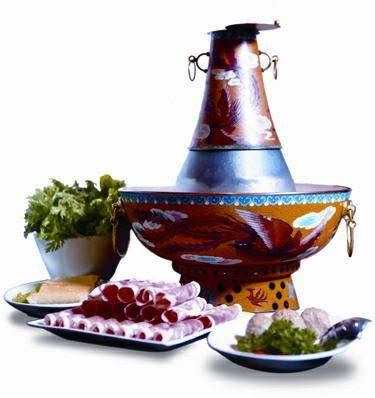Social pot
2013-04-29ByJiJing
By Ji Jing
The Chinese hotpot, a traditional and typical style of cuisine, is going international. Local chain Haidilao is planning to open a restaurant in Westfield Shopping Center in Arcadia, Los Angeles. With more than 70 eateries in 15 cities across China and over 14,000 staff, it is one of the 10 most popular hotpot restaurants in the country. In 2011, Haidilao realized a sales volume of 2 billion yuan ($320 million). According to China Business News, the chain plans to open two restaurants in the United States and an additional two in Singapore.
Whether Americans will take to hotpot re- mains uncertain. At Haidilao, famous for its firstrate service, customers are given free drinks, snacks, popcorn and even manicures while waiting to be seated.
Social mood
The concept of hotpot refers to a metal container of stock placed at the center of a dining table, which, is filled with raw ingredients such as thinly sliced meat, vegetables, animal innards and seafood, usually accompanied with a dipping sauce.
In China, people eat hotpot for the warm at- mosphere it creates. Normally, those who share in the experience are either family or friends. Business is rarely conducted over hotpot.
“People eat hotpot to strengthen their friendship,” Qi Dongming, a Sichuan native, said.
Hotpot has also become increasingly popular among foreigners who live in China.
Duncan Muir, an expat from Scotland who works in Beijing says he often eats hotpot with his friends and rated Haidilao as his favorite spot.
“I do like it. The first time I had hotpot I found it strange because its very different from the way we eat in the UK. Theres something quite nice about sitting around a table with something hot bubbling in the middle,” he said.
Muir added that in order to go for hotpot people have to be in quite a social mood, with each person taking part in the cooking process.“Its definitely more of a social thing, especially if you go to a big restaurant with a group of people.”
Sichuan style
Sichuan is famous for its hotpot. Locals there not only eat it in winter, but also during the hot summer months. Outside almost every hotpot restaurant, there are people sitting on benches, waiting for a table. The local variety is famous for its super spicy flavor. Ingredients most commonly used include vegetables, seafood, animal innards such as beef or pig trachea, pig brains, duck intestines, and beef tripe.
Sichuan hotpot was invented about 200 years ago. At that time, bargemen on the Yangtze River put pig innards into a pot propped up by stones and burned firewood to bring water to the boil.
“They were tired after an intense days labor and placing different types of food into one pot saved time,” Huang Jun, a restaurant manager in the provincial capital Chengdu, told Beijing Review. “In addition, due to their low incomes, the bargemen couldnt afford pork or beef.”
In Sichuan, high-end hotpot restaurants have few customers. Most locals prefer midlevel joints that focus on the dishs traditional characteristic.
“High-end spots alter their ingredients to cater to tourist tastes. They are not tasty for local people,” Huang Xiaowei, a local, said.
A new trend
In recent years, restaurants with smallerthan-usual hotpots have gained popularity. Xiabuxiabu, a chain founded in 1996, has opened more than 350 restaurants across the country. It exists in many shopping malls and people often have to queue for tables. In Beijing alone, the chain receives more than 200,000 customers a day.
At Xiabuxiabu, people sit along a rectangular bar counter. Each patron has a small pot heated by an induction cooker. The chain has become a favorite Chinese fast food spot among young locals, who often eat alone or with one or two friends.
The small hotpot represents a new trend. Qi said the cuisine needs reform to suit a modern way of life and to meet the need for healthy fast food.
The Legend
Chinese hotpot boasts a long history. According to legend, Kublai Khan (1215-94), who founded the Yuan Dynasty (1271-1368), ordered his chef to cook stewed mutton during a southern expedition. However, while the cook was cutting the meat into chunks, a messenger ran in and reported that enemy troops were only 5 km away. Thus, there was little time to eat. Afraid of being punished by Kublai Khan for failing to serve the dish, the chef sliced the mutton into thin pieces, which he threw into boiling water. Placing the meat into a bowl as soon as it had changed color, he served the dish with salt, chopped shallots and ginger. After swallowing several helpings, Kublai Khan led his troop to defeat the enemy, capturing the opposing leader in the process.
At the victory banquet, Kublai Khan again ordered the same food he had eaten before battle. The chef sliced lamb legs and served the boiled pieces with a dipping sauce made of sesame paste, pepper and leek flower. From then on, mutton cooked in hotpot enjoyed considerable fame throughout the imperial court.
Marco Polo was once treated to a Mongolian hotpot in Kublai Khans palace.
